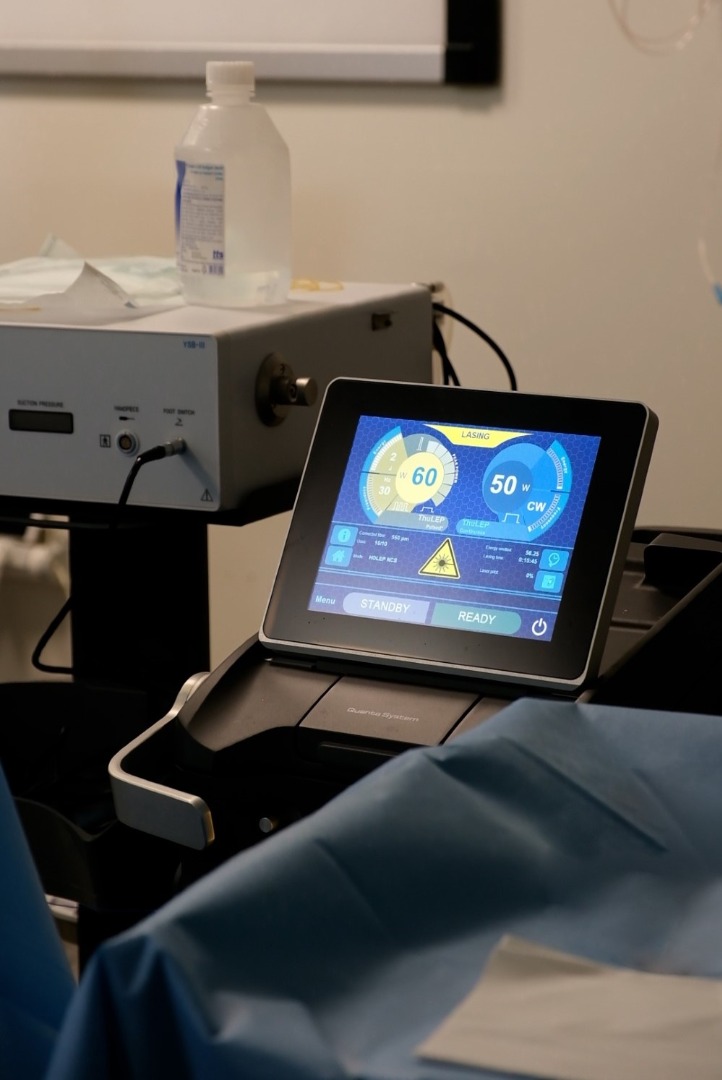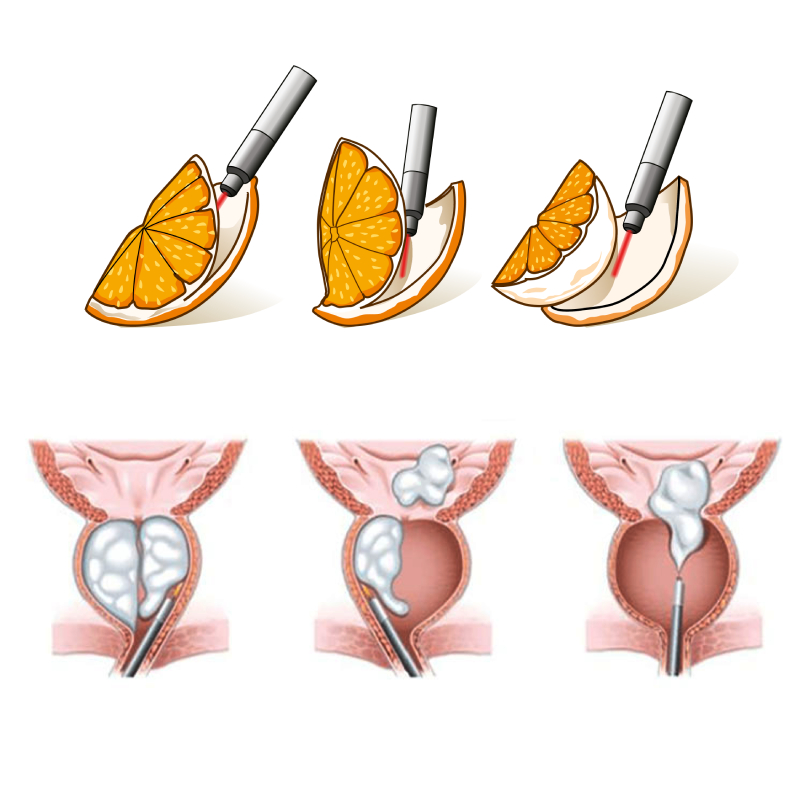



HOLEP prodecure is the most effective current treatment for prostate enlargement. It is possible to get very successful results for prostate patients with Holep.
HoLEP surgery is a surgical technique performed by entering between the prostate tissue and the prostate capsule using a laser and completely separating the prostate from its capsule. It can be exemplified like separating an orange from its peel. The prostate tissue thrown into the bladder is removed by vacuuming with the help of a device called a morcellator.
Numerous surgeries performed successfully
Hundreds of cancer patients regained their health
Hundreds of patients regained their health as a result of Holep/Thulep surgery
Numerous national and international publications in reputable medical journals
The Holmium Laser Enucleation of the Prostate (HoLEP) procedure is a minimally invasive surgical technique used to treat benign prostatic hyperplasia (BPH), which is an enlargement of the prostate gland. The procedure involves the use of a holmium laser to remove the enlarged prostate tissue that is blocking the flow of urine from the bladder. Here's a general overview of how the HoLEP procedure is performed:
Anesthesia: The patient is given either general or spinal anesthesia to ensure they are comfortable and pain-free during the procedure.
Access: The surgeon inserts a scope (a thin, flexible tube with a camera and light) through the urethra (the tube that carries urine from the bladder out of the body). There is no incision made in the skin.
Enucleation: The holmium laser is then used to precisely and carefully cut and remove the enlarged prostate tissue from the surrounding capsule. The laser simultaneously cuts and cauterizes, minimizing bleeding.
Morselization: The enucleated prostate tissue is then pushed into the bladder, where it is subsequently fragmented (morselized) into smaller pieces using a specialized tool.
Removal: These smaller pieces are then suctioned out of the bladder, clearing the obstruction and allowing for normal urine flow.
Catheter Placement: Typically, a catheter is placed temporarily to assist with urination post-surgery and to ensure the bladder remains empty, allowing the surgical site to heal.
It's important for patients considering HoLEP to discuss with their healthcare provider about their suitability for the procedure, potential risks, and the recovery process.
When comparing Holmium Laser Enucleation of the Prostate (HoLEP) with Transurethral Resection of the Prostate (TURP), it's important to consider various factors, including the effectiveness, recovery time, potential complications, and suitability for different prostate sizes. Both procedures aim to treat benign prostatic hyperplasia (BPH), but they employ different techniques.
In summary, HoLEP is a more modern, minimally invasive option that may offer advantages in terms of recovery and effectiveness for larger prostates, whereas TURP has a long history of effectiveness for treating BPH, particularly in cases of moderate enlargement. The choice between HoLEP and TURP should be made after a thorough discussion between the patient and their healthcare provider, considering all personal and medical factors.
